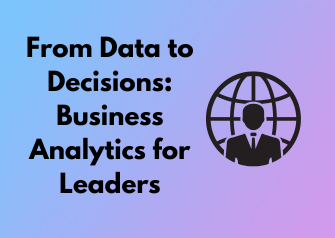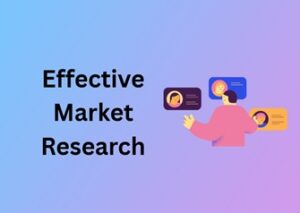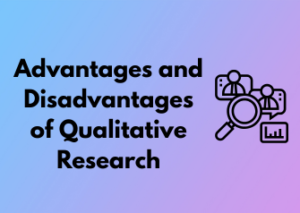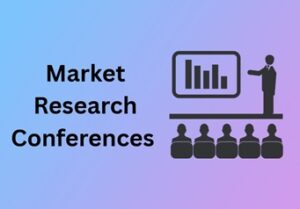Let’s dive into a fascinating world where numbers and insights power business decisions. Think of business analytics as the backbone of any data-driven organization. It’s not just about crunching numbers—it’s about bringing clarity to raw data and shaping it into something leaders can count on for future decisions. Here, we’ll explore the foundational elements that make business analytics so vital.
At its heart, business analytics is the practice of using data to understand trends, solve problems, and predict outcomes. Imagine running your business like a ship in the middle of the ocean. Without a compass (or business analytics), how do you navigate? Through charts, numbers, and statistical models, analytics gives leaders that much-needed clarity on where they are, where they should go, and how to get there.
The secret lies in understanding how raw data transforms into actionable insights. It’s more than spreadsheets and dashboards; it’s an artful blend of data science, technology, and business acumen, all working together to drive smarter decisions.
Why Understanding the Basics is Non-Negotiable for Leaders

As a leader, you don’t have to be a data scientist, but understanding the fundamentals of business analytics is essential. Why? Because every decision you make, from hiring new talent to launching a product, could benefit from data-driven support. Let’s face it—we’re living in the Information Age, and ignoring data is like flying blind in a digital-first world.
If you’ve ever wondered why some businesses seem to always make the right moves, the answer usually lies in the way they’ve embraced analytics. It builds the groundwork for agility, precision, and long-term success. Leaders who understand this foundation ensure their teams stay ahead, not get left behind.
Breaking Down the Key Components of Business Analytics
There are three critical components every leader should be aware of when it comes to analytics:
- Descriptive Analytics: This helps you understand what has already happened. It’s all about answering the “what” questions by looking at historical data.
- Diagnostic Analytics: This dives deeper into the “why” behind the trends. It pinpoints reasons for specific outcomes or issues, giving you a clearer picture of cause and effect.
- Prescriptive Analytics: The holy grail for many leaders, this component uses complex algorithms and advanced technology to recommend the best course of action.
Each of these elements builds upon the other, creating a collaborative ecosystem of insights that help leaders make more informed decisions. Sound overwhelming? Don’t worry; this process can be simplified with the right guidance and tools.
The Human Element: Why Context is Everything
Here’s an important truth: analytics without context is meaningless. Numbers and graphs are great, but it’s how you interpret them that makes the difference. This is where your unique expertise as a leader comes into play. You know your business better than anyone else, and your ability to merge analytical insights with real-world experience is what transforms data into decisions.
Ultimately, business analytics works best when paired with intuition and industry knowledge, creating a blend of art and science. So next time you glance at a report, ask yourself: What’s the story behind the numbers?
Moving Beyond Numbers: Extracting Meaningful Insights
Let’s face it – numbers, on their own, can feel overwhelming. Rows upon rows of spreadsheets, graphs with sharp peaks and valleys, and a sea of percentages can leave even the most seasoned leaders scratching their heads. But here’s the thing: business analytics isn’t about drowning in data. It’s about turning numbers into actionable stories, and that’s where meaningful insights come into play.
So, how do we move beyond numbers and uncover insights that actually make a difference? It starts with reframing how we view data. Think of raw data as unpolished diamonds – they hold extraordinary value, but only when refined. By applying the right questions, tools, and methods, we can transform that overwhelming information into something tangible, something that sparks clarity and drives action.
1. Context is Key
One of the most significant steps in extracting meaningful insights is giving data context. Numbers alone don’t tell a story, but their relationship to your business goals, market conditions, or customer behavior does. For example, a 15% increase in sales sounds great, right? But what if that happened amid a 30% increase in marketing costs? Suddenly, the storyline shifts.
- Before diving into any dataset, ask yourself: “What are we trying to learn?”
- Always connect data to specific questions or challenges you’re facing, whether it’s improving customer retention, reducing costs, or understanding employee satisfaction.
2. Spotting Patterns Instead of Fixating on Points
Humans are naturally drawn to numbers that stand out – big peaks, sudden drops, or record highs. But real insights often lie in patterns, not isolated points. If you see sales spike every January or a drop in product returns every summer, that’s something to explore further. Understanding trends over time gives context to the highs and lows.
Take time to zoom out. Instead of focusing on the daily fluctuations, look for sustained patterns. These patterns often hint at larger forces at work – seasonality, buying behaviors, or shifts in the industry. Leaders who identify patterns early can align their strategies to capitalize on or mitigate their impact.
3. Use Stories to Express Numbers
Here’s a simple truth – we’re wired to understand stories better than figures. Presenting data through visualizations or a compelling narrative helps translate complex insights into something relatable. Charts, graphs, and dashboards, when done right, act like visual anchors for your data-driven story.
Let’s say customer churn increased by 5% last quarter. Instead of throwing that number at your team, frame it: “We’ve seen a 5% rise in customers leaving us in Q3, but one standout trend is that long-time users are leaving due to slow customer support response times.” This focus helps identify the ‘why’ behind numbers, paving the way for meaningful action.
4. Actively Ask “What’s Next?”
Meaningful insights don’t just explain the past – they pave the way forward. As a business leader, challenge yourself with this crucial question: How does this data inform our next move? If an analysis shows high engagement from a particular demographic, focus on how you can deepen that connection. If inefficiencies are revealed, strategize on ways to optimize your process.
- Don’t let insights sit idle. Build actionable steps from every analysis.
- Share findings with your team – insights gain power when they inform collective decisions.
Real-time Analysis: Making Sense of Data on the Fly
In today’s fast-paced business environment, making decisions based on stale or outdated data is no longer an option. Real-time analysis has emerged as a game-changer, enabling leaders to stay dynamic, responsive, and informed in the heat of the moment. But what does it really mean to analyze data in real time, and more importantly, how can you make sense of it without feeling overwhelmed? Let’s break it down.
What is Real-time Analysis?
Think of real-time analysis as your organization’s early warning system. It involves processing and evaluating data almost instantly after it’s collected. Unlike traditional analytics, which might rely on periodic reports prepared after days or weeks, real-time analysis gives you actionable insights as events unfold. Whether it’s monitoring website traffic, managing supply chain logistics, or tracking customer behavior during a live campaign, the immediacy of this approach gives you a significant competitive edge.
Why Does Real-time Matter for Leaders?
For leaders, standing still isn’t an option. Decisions often need to be made quickly, sometimes in environments where the stakes are high and circumstances shift by the minute. With real-time analytics, you’re no longer basing decisions on “what happened last month.” Instead, you’re empowered to act on “what’s happening right now.”
For example, a retail business might use real-time analytics during the holiday shopping rush to identify which products are flying off the shelves. This enables them to make immediate changes—like reallocating inventory or running flash sales. In another instance, marketing teams might use real-time data to tweak advertisements based on how audiences are interacting with campaigns at that very moment.
How Do You Make Sense of It All?
With a constant flow of data, the challenge isn’t just accessing information—it’s interpreting it effectively and avoiding analysis paralysis. Here are some ways leaders can cut through the noise and extract clarity from real-time analytics:
- 1. Focus on Key Metrics: Not all data is created equal. Identify what truly matters to your goals—a few core Key Performance Indicators (KPIs) can inform better decisions than a glut of peripheral data points.
- 2. Leverage Dashboards: Invest in intuitive, automated dashboards that visualize data in real-time. Trends, anomalies, and performance shifts jump out far more clearly when displayed in graphs, charts, or color-coded alerts.
- 3. Collaborate with Experts: Sometimes, the significance of real-time data requires deeper analysis. Enlist the help of data analysts or tech-savvy team members to interpret complex patterns.
- 4. Use AI and Automation: Artificial Intelligence and machine learning can help filter, sort, and even interpret data for you—highlighting what’s relevant without requiring manual effort.
Consider an airline that uses real-time analytics to optimize flight schedules and gate assignments during weather disruptions. By evaluating passenger loads and connecting flights instantly, they minimize delays and improve customer satisfaction. Similarly, ride-sharing companies like Uber depend heavily on real-time data to adjust pricing, anticipate demand, and deploy drivers where they’re needed most.
A Mindset Shift for Real-time Success
To successfully embrace real-time analytics, leaders need to cultivate a mindset of agility and adaptability. It’s less about being perfect and more about being proactive. Understand that real-time insights might require you to make quick pivots, allowing your business to stay ahead of competitors or emerging challenges.
Helping Leaders Spot Trends Before They Start

Imagine being able to foresee a customer demand or market shift before it takes off. What if you could know exactly where your competitors are going to move next? For modern leaders, spotting trends before they develop isn’t just a nice-to-have—it’s a necessity. In today’s fast-paced world, where information spreads like wildfire, getting ahead of the curve can mean the difference between leading the market and playing catch-up.
So, how do you develop this magical ability to predict what’s next? The answer lies in business analytics. But don’t worry—this isn’t about staring at rows of numbers until your eyes glaze over. It’s about recognizing patterns, asking the right questions, and empowering your team to think forward. Let’s break it down.
1. Recognize the Power of Leading Indicators
Not all data is created equal, and that’s where leading indicators come in. While historical data shows where your business has been, leading indicators give you a glimpse of where it’s going. For example:
- Are you noticing a surge of interest in specific customer inquiries?
- Is a particular product or service getting more mentions on social media?
- What’s happening in broader market trends or adjacent industries?
By being attuned to these signals, you can begin to piece together the puzzle of a coming trend. Leaders don’t need to analyze everything themselves but should ensure their teams are asking the right questions and focusing on metrics that signal change or opportunity.
2. Use Historical Patterns to Predict Future Movements
History often repeats itself, even in business. Knowing how trends developed in the past can give you a framework for anticipating what’s next. Dive into your analytics platform to look for patterns. Did a slight increase in online searches last winter lead to a boost in product demand? When certain keywords spike during a specific season, does that mark the start of something bigger?
These breadcrumbs are often subtle but incredibly powerful for leaders. By connecting the dots between past data and present-day developments, you can get ahead of the crowd and capitalize on tomorrow’s opportunities.
3. Pay Attention to Unstructured Data
Here’s a pro tip: not all data fits neatly into spreadsheets. Unstructured data — like customer reviews, social media comments, or even product feedback emails — often holds the key to trends you might not have noticed. Use tools like natural language processing (NLP) or social listening platforms to comb through this treasure trove of information.
For instance, are there recurring phrases customers keep mentioning? “This app is so intuitive for beginners” might indicate a demand for user-friendly, customizable features. As a leader, urge your teams to dig into this gold mine, uncovering trends that haven’t yet been quantified by traditional analytics.
4. Create a Culture of Curiosity
The best leaders know they don’t have to spot trends alone—that’s what teams are for! Building a culture of curiosity within your organization fuels innovation, experimentation, and awareness of trends. Encourage team brainstorming sessions dedicated to exploring emerging areas of interest. Let your employees track what excites them about the industry and share their findings regularly.
The more stakeholders you involve in this process, the stronger (and earlier) your insights become. Collaboration energizes creativity. Great ideas might come from sales teams interacting directly with customers or from marketers who spend their days immersed in consumer behavior patterns.
5. Act with Confidence, but Stay Adaptable
Here’s the thing: even with the best data, not all predictions will pan out. Spotting trends early involves an element of risk. The key is to act confidently on the information you have but remain flexible. If the trend shifts, pivot. If the data tells you something unexpected, listen and adjust quickly.
Being an agile leader is just as important as being a forward-thinking one. Equip your team with the tools and processes they need to monitor performance and refine strategies in real-time. A trend that looks small today could become the next big thing tomorrow—but only if you’re ready to move quickly and decisively.
Fostering Smarter Choices with Predictive Analytics
Let’s face it: there’s never been more data to work with in the world of business. But while raw numbers are exciting, they’re just the beginning of the story. The real magic happens when we start peeking into the future with predictive analytics – a game-changing tool for making smarter, more confident decisions. If you’ve been wondering how to turn data into a crystal ball for your business, buckle up! You’re about to discover some practical, approachable steps you can take to embrace predictive analytics.
What Is Predictive Analytics, and Why Does It Matter?
In simple terms, predictive analytics uses historical data, algorithms, and statistical models to forecast future outcomes. Think of it like a weather forecast – based on past patterns, it predicts what’s likely to happen next. The difference is that instead of just telling you if it might rain tomorrow, predictive analytics helps your business avoid costly missteps and seize opportunities with laser precision.
For leaders, this means you’re no longer flying blind or relying purely on gut feelings. Instead, predictive analytics arms you with solid, data-driven insights about what’s most likely to happen in your market, your operations, or even your customer base. And trust us, this isn’t about making guesses – it’s about making smarter, evidence-based choices.
Where Predictive Analytics Shines for Leaders
So, where can leaders truly leverage this technology? Let’s take a look at a few areas where predictive analytics excels:
- Customer Behavior: Imagine knowing which customers are most likely to churn before they even decide to leave. Predictive analytics can help you understand buying patterns, preferences, and warning signs of disengagement so you can act proactively to retain loyalty.
- Inventory Management: Stocking too much? Stocking too little? Predictive models can prevent these costly mistakes by predicting demand based on everything from seasonal trends to shifts in economic conditions.
- Risk Assessment: Want to make bold moves, but unsure of the potential downside? Predictive analytics can flag warning signs or areas of risk before they become critical, giving you peace of mind as you steer your business forward.
- Talent Strategies: Hiring, retaining, and understanding your team can also benefit from predictive tools. Leaders can use analytics to identify potential turnover risks or align roles with the most suitable candidates based on historical hiring success metrics.
How to Build a Predictive Analytics Culture
Now, here’s the key: the power of predictive analytics isn’t just in having the right tools but also the right mindset. For leaders, fostering smarter decision-making with analytics starts with cultivating a culture that’s eager to embrace it. Here’s how you can do that:
- Invest in Training: Ensure that your team understands how predictive analytics works and how they can use it to make their own decisions more impactful.
- Seek Cross-Functional Input: Predictive models become much more valuable when people from different parts of the organization contribute to – and help interpret – the data.
- Actionable Implementation: Predictive analytics only matters if you act on it. Make sure insights are tied to clear action steps and measurable results.
The Role of Analytics in Team and Strategy Building
Building a great team and crafting a winning strategy are two of the most essential ingredients for business success. But how does business analytics fit into these elements? If you’re leading a team or making strategic decisions for your organization, understanding how analytics shapes these areas can make the difference between good and extraordinary outcomes. Let’s dive in!
1. Creating Better Teams Through Data
A successful team doesn’t just happen by chance – it’s built with intention. Analytics offers leaders unique insights into their teams’ strengths, weaknesses, and overall dynamics. By analyzing performance metrics, communication patterns, and collaboration habits, you can fine-tune roles to suit each member’s skills and potential.
For example, say you notice that certain team members excel at problem-solving but struggle with time management. With data in hand, you can assign these individuals to roles better suited to their skill sets or implement tools to strengthen areas of improvement. This creates a more balanced and efficient team structure.
Analytics can also help identify skill gaps. Are there areas where your team consistently struggles? Perhaps it’s a lack of expertise in a specific technology or soft skills like communication. Insights from data can guide training programs or hiring decisions, so everyone brings their A-game.
Pro Tip: Use analytics tools powered by artificial intelligence to gain insights into employee engagement or predict productivity dips before they occur. This human-centric approach to data is a must for modern leadership.
2. Aligning Strategy with Data-Driven Goals
A brilliant strategy combines vision with actionable goals, and analytics can help you refine both. Data allows leaders to back their big-picture ideas with clear, measurable objectives. It’s like turning on a flashlight in a pitch-dark room — suddenly, you can see the steps needed to achieve your destination.
Suppose you’re considering entering a new market. Analytics can give you a peek into customer preferences, competitor trends, and revenue potential. Or, if you’re approaching a product launch, data can guide you on optimal timing, pricing, and marketing strategies. These insights replace guesswork with precision.
And the best part? It doesn’t end there. Analytics makes strategies flexible. By constantly monitoring performance metrics, you can adjust plans on the fly, ensuring your strategic goals remain aligned with the business environment. This agility is priceless in today’s fast-changing world.
3. Streamlining Collaboration Between Teams
Ever noticed how one team in a company might rarely interact with another? Analytics can bridge these gaps. By visualizing workflows and interdependence among departments, leaders can encourage collaboration in ways that directly support company goals.
For instance, marketing and sales teams often rely on one another, but miscommunication can lead to bottlenecks. Analytics can display patterns of engagement between departments and highlight areas where better communication could significantly boost efficiency and outcomes.
Moreover, analytics fosters transparency within teams. Sharing performance dashboards or key findings ensures teams stay on the same page and builds trust. A well-aligned team, both visually and functionally, is a powerhouse of productivity.
4. Ensuring Buy-in Through Data
Here’s a reality every leader faces: not all team members will naturally buy into a strategy. But when you bring solid analytics to the table, skepticism often melts away. Numbers don’t lie, and they can convince even the toughest critics. Presenting data-backed arguments strengthens your case and unites people behind shared goals.
Visualizing success is equally important. Have you ever shown an analytics dashboard that demonstrates how a new initiative is paying off? It’s a powerful motivator. People rally behind success stories – especially when those successes stem directly from their contributions.
Essential Tools and Methods Leaders Must Embrace
In today’s fast-paced business world, leaders can’t afford to make decisions based on instinct alone. Analytics has become the cornerstone of intelligent leadership, and knowing which tools and methods to lean on can make the difference between merely keeping up and truly excelling. Let’s dive into the essential tools and strategies every business leader must embrace to thrive in the data-driven age.
Why Tools Matter
Picture this: You’re steering a ship in the middle of an unpredictable ocean. Would you trust your gut or rely on GPS, radar, and weather forecasts? The same logic applies in business. Tools provide clarity, reduce the margin for error, and let leaders see the bigger picture. They pave the way for informed decisions, improving agility and foresight in a competitive environment.
The Must-Have Tools in a Leader’s Arsenal
To navigate the world of business analytics effectively, certain tools are non-negotiable:
- Business Intelligence (BI) Platforms: Tools like Tableau, Power BI, and Looker are staples. They transform raw data into visually appealing dashboards, enabling leaders to monitor key performance indicators (KPIs) and track trends with ease.
- Customer Analytics Platforms: Tools like Salesforce, HubSpot, and Adobe Analytics help leaders gain insights into customer behavior, preferences, and interactions. By truly understanding your audience, you can tailor strategies to meet their evolving needs.
- Collaboration and Workflow Tools: Solutions such as Slack, Trello, and Microsoft Teams ensure that analytical insights are not locked away in siloed reports. They promote team-wide understanding by fostering communication and collaboration.
- Advanced Analytics Platforms: For leaders who want to push the envelope, platforms like SAS, Python-based analytics libraries, and IBM Watson enable complex predictive modeling and machine learning, pre-empting future risks and opportunities.
Methods to Stay Ahead
Having the tools is only half the battle; knowing how to use them effectively is just as important. Here are methods that leaders should adopt to make the most of business analytics:
- Adopt a Data-First Mindset: Encourage your organization to shift towards a culture where decisions are backed by data. This requires training and aligning team members to view data as a vital part of every strategy.
- Focus on Actionable Insights: It’s easy to get lost in numbers and reports. Leaders should focus on actionable insights – the “so what” of data – rather than just the data itself.
- Stay Agile: The business landscape is ever-changing. Use data analytics to pivot quickly, address challenges, and capitalize on opportunities in real-time.
- Foster Data Literacy: Ensure that not just analysts but teams across the board can engage with and understand data. When everyone speaks the same “data language,” collaboration and decision-making improve drastically.











